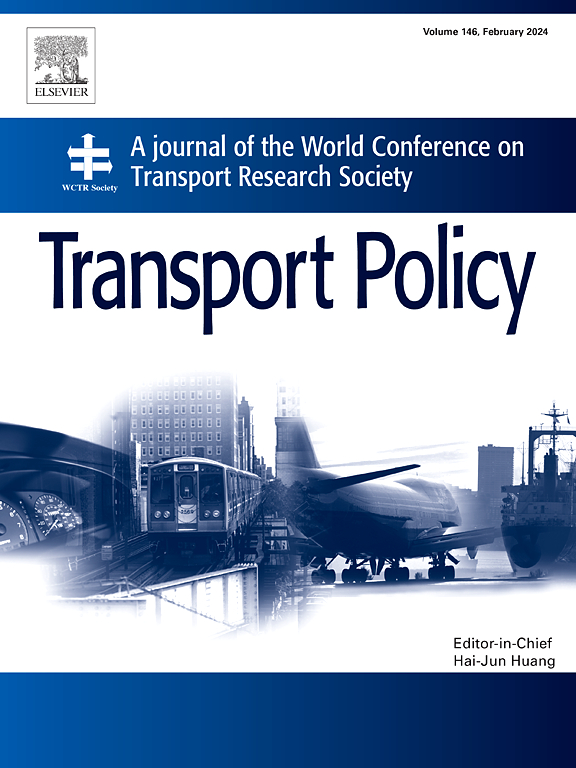Understanding the post-pandemic evolution of telecommuting preferences by using a panel stated preference survey
IF 6.3
2区 工程技术
Q1 ECONOMICS
引用次数: 0
Abstract
This study's objective is to assess the telecommuting implementation during the protracted COVID-19 disruption to extrapolate our comprehension of telecommuting's options and obstacles for the future. To accomplish this, we investigated employees' desire to continue telecommuting in the post-pandemic era and their work arrangements during the COVID-19 pandemic. We used data from two cross-sectional travel surveys with a one-year gap from the same group of people in the Greater Toronto Area (GTA) during the COVID-19 pandemic shutdown. A joint SP (Stated Preference) model is estimated to determine the influential workplace decision-making variables. Results suggest that the increase in telecommuting would decelerate as the risk of the pandemic decreased. However, employees are still interested in telecommuting if given the option. Education level, childcare duties, occupation type, and access to technological and communicational tools are found to influence the decision to telecommute. The hybrid work arrangement was found to be the optimal solution for satisfying all the employees' requirements. Based on findings, an employee's perspective of telecommuting preferences, obstacles, and options are portrayed, and policy implications are presented.
通过小组陈述偏好调查了解电子通勤偏好大流行后的演变情况
本研究的目的是评估在 COVID-19 大流行期间远程办公的实施情况,以推断我们对未来远程办公的选择和障碍的理解。为了实现这一目标,我们调查了员工在疫情结束后继续远程办公的愿望,以及他们在 COVID-19 大流行期间的工作安排。在 COVID-19 大流行停产期间,我们使用了来自大多伦多地区(GTA)同一批人的两次间隔一年的横截面旅行调查数据。对联合 SP(陈述偏好)模型进行了估算,以确定影响工作场所决策的变量。结果表明,随着大流行病风险的降低,远程办公的增加速度将减慢。然而,如果员工可以选择远程办公,他们仍然对远程办公感兴趣。研究发现,教育水平、育儿责任、职业类型以及获得技术和通信工具的途径会影响远程办公的决策。混合工作安排被认为是满足所有员工要求的最佳解决方案。根据研究结果,从雇员的角度阐述了远程办公的偏好、障碍和选择,并提出了政策影响。
本文章由计算机程序翻译,如有差异,请以英文原文为准。
求助全文
约1分钟内获得全文
求助全文
来源期刊

Transport Policy
Multiple-
CiteScore
12.10
自引率
10.30%
发文量
282
期刊介绍:
Transport Policy is an international journal aimed at bridging the gap between theory and practice in transport. Its subject areas reflect the concerns of policymakers in government, industry, voluntary organisations and the public at large, providing independent, original and rigorous analysis to understand how policy decisions have been taken, monitor their effects, and suggest how they may be improved. The journal treats the transport sector comprehensively, and in the context of other sectors including energy, housing, industry and planning. All modes are covered: land, sea and air; road and rail; public and private; motorised and non-motorised; passenger and freight.
 求助内容:
求助内容: 应助结果提醒方式:
应助结果提醒方式:


